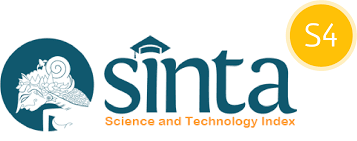PERBANDINGAN ALGORITMA NAIVE BAYES DAN NAIVE BAYES BERBASIS PSO UNTUK ANALISIS KREDIT PADA PT. BPR SYARIAH PAOKMOTONG
DOI:
https://doi.org/10.29408/jit.v2i2.1460Keywords:
Analysis, Credit, Naive Bayes, Particle Swarm OptimizationAbstract
According to Law No.21 of 2008, it is stated that Islamic banks are business entities that collect funds from the public in the form of deposits and channel to the public in the form of loans and / or other forms in order to improve people's lives. Credit is the provision of money or bills that can be equated with it, based on a loan and loan agreement between the bank and another party which requires the borrower to repay the debt after a certain period of time with interest (Banking Law No.10 of 1998).
In analyzing a credit, sometimes an analysis performs an inaccurate analysis, so there are some customers who are less able to pay credit installments, resulting in substandard loans and even defaults. From the above problems, researchers conducted a credit analysis using computerized techniques by utilizing RapidMiner software in processing data. The right data processing technique to use is classification. One method of classification of data mining is the Naive Bayes algorithm. The researcher used weighting by applying Particle Swarm Optimization (PSO) for attribute selection to improve the accuracy of Naive Bayes.
After testing with the Naive Bayes algorithm model of 71.00%, the Naive Bayes algorithm based on particle swarm optimization results in a higher accuracy value of 88.51% compared to the Naive Bayes algorithm model. From these results the difference between the two models is 17.51%.
DOI : 10.29408/jit.v2i2.1460
References
Larose, Daniel T, 2005, Discovering Knowledge in Data: An Introduction to Data Mining, John Willey & Sons. Inc
Daniel T. Larose. Data Mining Methods and Models. Hoboken, New Jersey :John Wiley & Sons, Inc.2007.
J. Han and M. Kamber, “Data Mining: Concepts and Techniques,†Ann. Phys. (N. Y)., vol. 54, p. 770, 2006.
Abraham, A., Grosan, C., & Ramos, V. (2006). Swarm Intelligence in Data Mining. New York: Springer., p. 2006, 2006.
Han, J., & Kamber, M. (2007). Data Mining Concepts and Technique. Morgan Kaufmann publisher
Yu, L., Chen, G., Koronios, a., Zhu, S., & Guo, X. (2007). Application and Comparison of Classification Techniques in Controlling Credit Risk. World Scientific , 111.
Berndtssom, M., Hansson, J., Olsson, B., & Lundell, B. (2008). A Guide for Students in Computer Science and Information Systems. London: Springer., p. 2008, 2008
Dawson, C. W. (2009). Project in Computing and Information System A Student's Guide. England: Addison-Wesley
Vercellis, C. (2009). Business Intelligence : Data Mining and Optimization for Decision Making. John Wiley & Sons, Ltd
Shukla, A., Tiwari, R., & Kala, R. (2010). Real Life Application of Soft Computing. CRC Press.., p. 2010, 2010.
Kasmir. 2012. Bank dan Lembaga Kuangan Lainnya. Jakarta: PT. Raja Grafindo Persada.
Sudarsono, Heri. 2012. Bank dan Lembaga Keuangan Syariah. Edisi Keempat. Yogyakarta : Ekonisia.
Saduldyn Pato (2013). Analisis Pemberian Kredit Mikro Pada Bank Syariah Mandiri Cabang Manado. Jurnal EMBA Vol. 1 No.4, 875-885.
Siti Maspirah, (2015). Algoritma Klasifikasi C4.5 berbasis Particle Swarm Optimization untuk Evaluasi Penentuan kelayakan Prmberian Kredit Koperasi Syariah.
Muhammad Saiful, (2016). Klasifikasi Kinerja Dosen STT Hamzanwadi Menggunakan Naive Bayes Berbasis PSO. Jurnal Informatika Hamzanwadi Vol. 1 No.1.
Ade Mubarok, (2019). Sistem Pendukung Keputusan kelayakan Prmberian Kredit Dengan Metode TOPSIS. Jurnal Informatika Vol. 6 No.1, 37-46.
UU RI nomor 9 tahun 1995 pasal 1
UU Perbankan No.10 Tahun 1998
UU No.21 tahun 2008
Downloads
Published
How to Cite
Issue
Section
License
Semua tulisan pada jurnal ini menjadi tanggung jawab penuh penulis. Jurnal Infotek memberikan akses terbuka terhadap siapapun agar informasi dan temuan pada artikel tersebut bermanfaat bagi semua orang. Jurnal Infotek ini dapat diakses dan diunduh secara gratis, tanpa dipungut biaya sesuai dengan lisense creative commons yang digunakan.
Jurnal Infotek is licensed under a Creative Commons Attribution 4.0 International License.
Statistik Pengunjung




